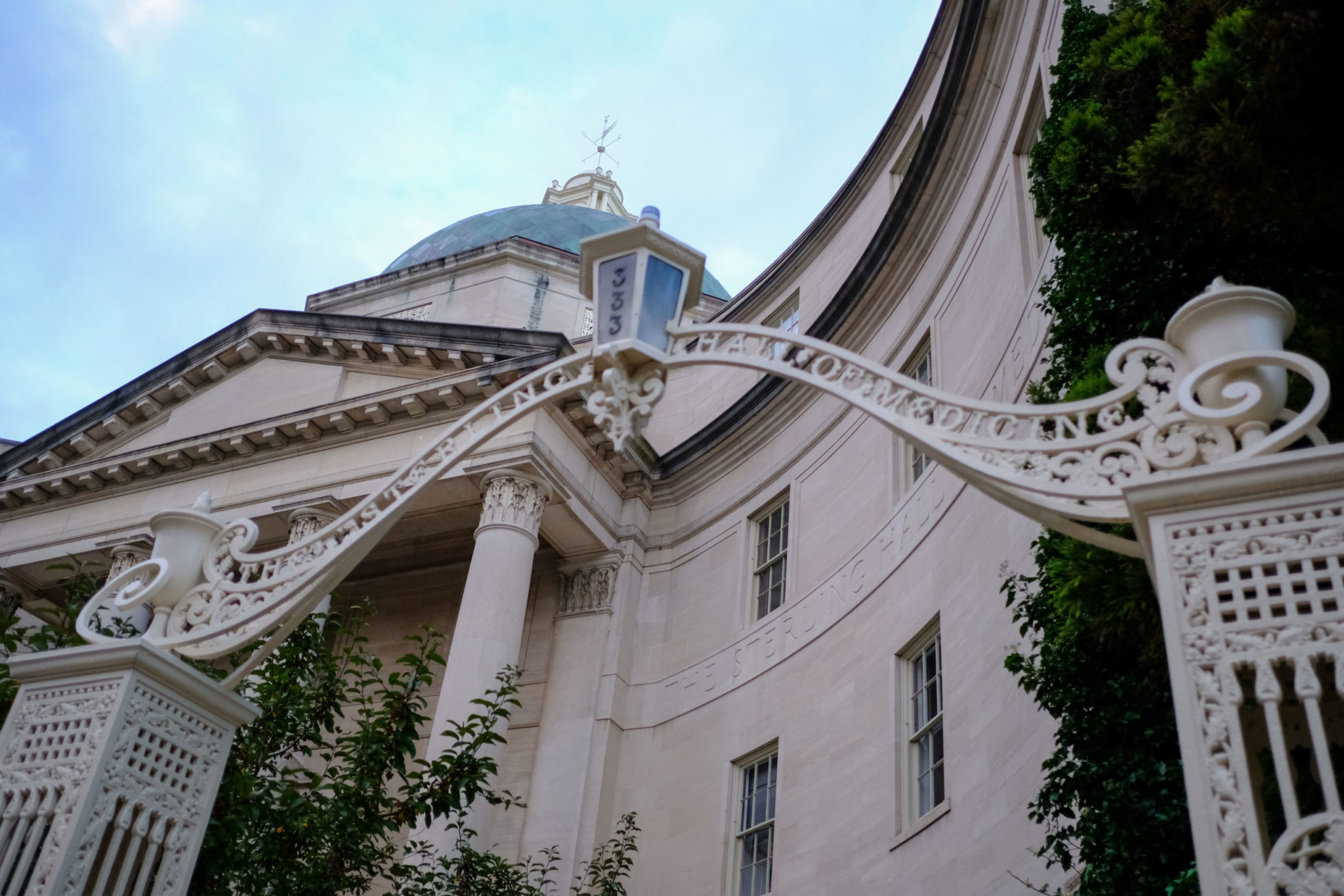Yale and National Brain Tumor Society launch DNA Damage Response consortium
Yale professor Ranjit Bindra’s lab will launch the DNA Damage Response Consortium with the National Brain Tumor Society in order to further cutting-edge treatment for brain cancer.

Yale Daily News
Through a new partnership between Yale and the National Brain Tumor Society, researchers will explore DNA damage response mechanisms as a potential means of treating patients with brain tumors.
The University and the society officially announced the initiative — called the DNA Damage Response Consortium — on Tuesday. NBTS is the largest nonprofit advocacy organization dedicated to brain cancer in the United States. The society recruited the help of Ranjit Bindra ’98 GRD ’05 MED ’07, Yale School of Medicine professor of therapeutic radiology and scientific director of the Chênevert Family Brain Tumor Center at Yale Cancer Center, to lead the new group.
“The DNA Damage Response (DDR) is a highly conserved network utilized to repair broken DNA in the genomes of our normal cells,” Bindra told the News. “Members of this consortium and others have discovered that the DDR is often dysregulated in brain tumor cells, which reveals novel vulnerabilities that can be exploited for a therapeutic gain, thus allowing us to selectively target tumor over normal tissue.”
DNA damage can occur easily through everyday exposures and common errors during the DNA replication process. DNA damage response is the process by which cells in the body discover and repair this routine damage to our genetic material. However, inconsistencies and failures of DNA damage response mechanisms can lead to the formation of cancerous tumors, including brain tumors.
Bindra and NBTS hope that further researching DNA damage response could unveil potential treatment options for malignant, or cancerous, tumors. Damage response treatments could prove beneficial as they can be applied to almost any type of brain tumor. Currently, there are only five drugs within this field of research approved for treatment, but none were specifically developed for brain cancer. DNA damage response treatments are also versatile, as they can be used in conjunction with other treatments or by themselves; There is already evidence of their success in treating drug-resistant cancers such as ovarian cancer.
“We are assembling a comprehensive, multi-disciplinary team which spans from the bench to the bedside, across the spectrum of adult and pediatric brain tumors, with a focus on rapidly translating the most cutting-edge DDR-based combination therapies into the clinic,” Bindra said.
The consortium aims to build upon current therapeutics that block the DNA damage response of cancerous cells using the collaborative efforts of various cancer researchers. The hope is that blocking or weakening the DNA damage response of cancerous cells will make them more susceptible to other forms of cancer treatment that induce damage and decrease tumor malignancy.
“With drugs designed to attack tumors’ DDR network already transforming other difficult-to-treat cancers, this strategy needs to be quickly and expertly tested for brain tumor patients,” Kirk Tanner, chief scientific officer of the National Brain Tumor Society, wrote to the News. “Our DDR Consortium will rapidly test different drugs against laboratory models and then bring the most promising ones forward to evaluate in early phase clinical trials with the goal of advancing towards regulatory review and ultimately to the market as new treatments for brain tumor patients. By rapidly conducting drug qualification and moving forward to clinical trials, we’re providing patients more opportunities, leveraging a treatment modality that is already showing effectiveness in other cancers.”
The consortium will leverage existing collaborative efforts between researchers at the University of California San Francisco, Mayo Clinic, St. Jude’s Cancer Hospital, New York University and other institutions, all led by Bindra’s lab at Yale. Additionally, the DDR consortium is combining efforts from adult and pediatric brain cancer researchers, a collaboration that is rarely seen in the field. Researchers will utilize skills ranging from bioinformatics and computational modeling to CRISPR genome editing to target tumor DNA damage response mechanisms.
Originally, the consortium was expected to launch near the end of 2019, but it was delayed due to funding and organizational issues during the pandemic. The researchers and organizers of the consortium used the past two years to begin to establish DDR as a fully operational and highly translational brain tumor consortium to drive cutting-edge therapeutics into clinical usage. The consortium has also laid out plans to incentivize investment in potential new treatment outcomes from their research by encouraging biopharmaceutical companies to evaluate their drugs.
“NBTS strongly believes that possible drugs and combinations discovered and advanced by this consortium have the potential to transform the treatment landscape for brain tumor patients,” David Arons, chief executive officer of the National Brain Tumor Society, wrote to the News. “Harnessing the power of philanthropy, team science, and partnerships with biopharmaceutical companies, this initiative highlights NBTS’s commitment to funding treatment-focused research.”
NBTS was founded in 2008 and is located in Boston, MA. Bindra obtained his MD-PhD from the Yale University Graduate School of Arts and Sciences and the Yale School of Medicine in 2005 and 2007, respectively.







